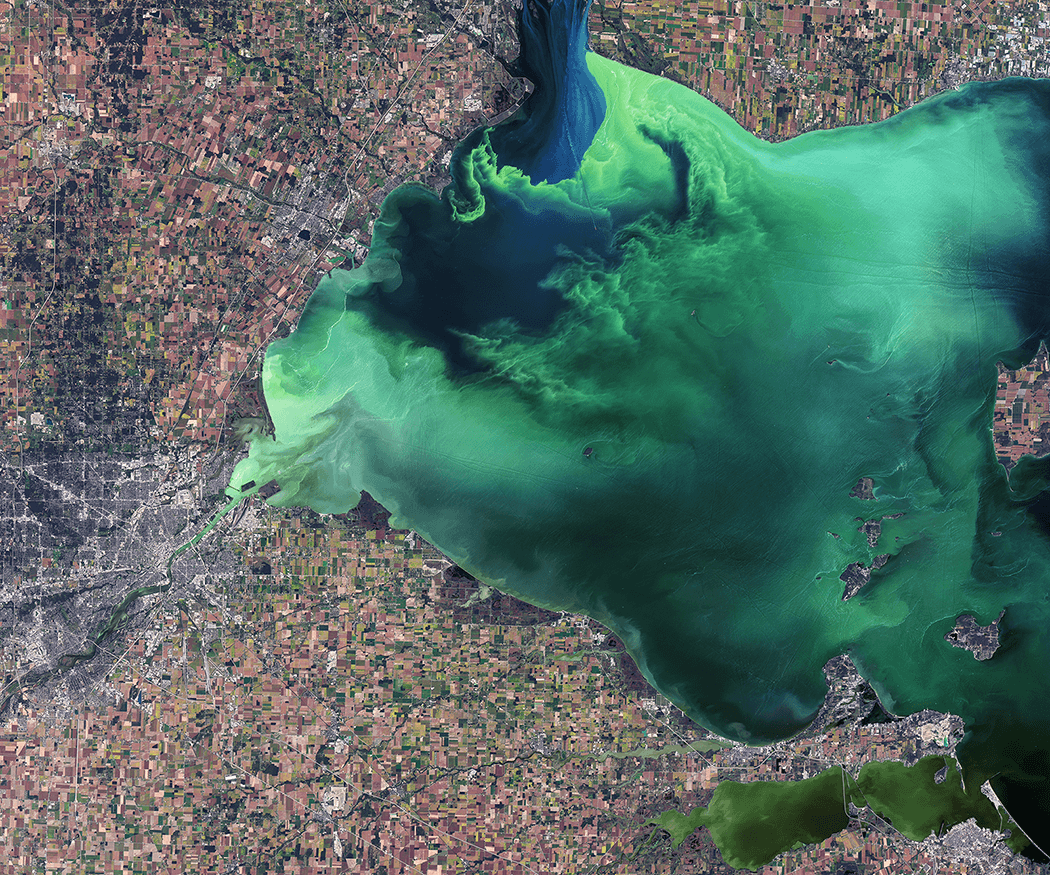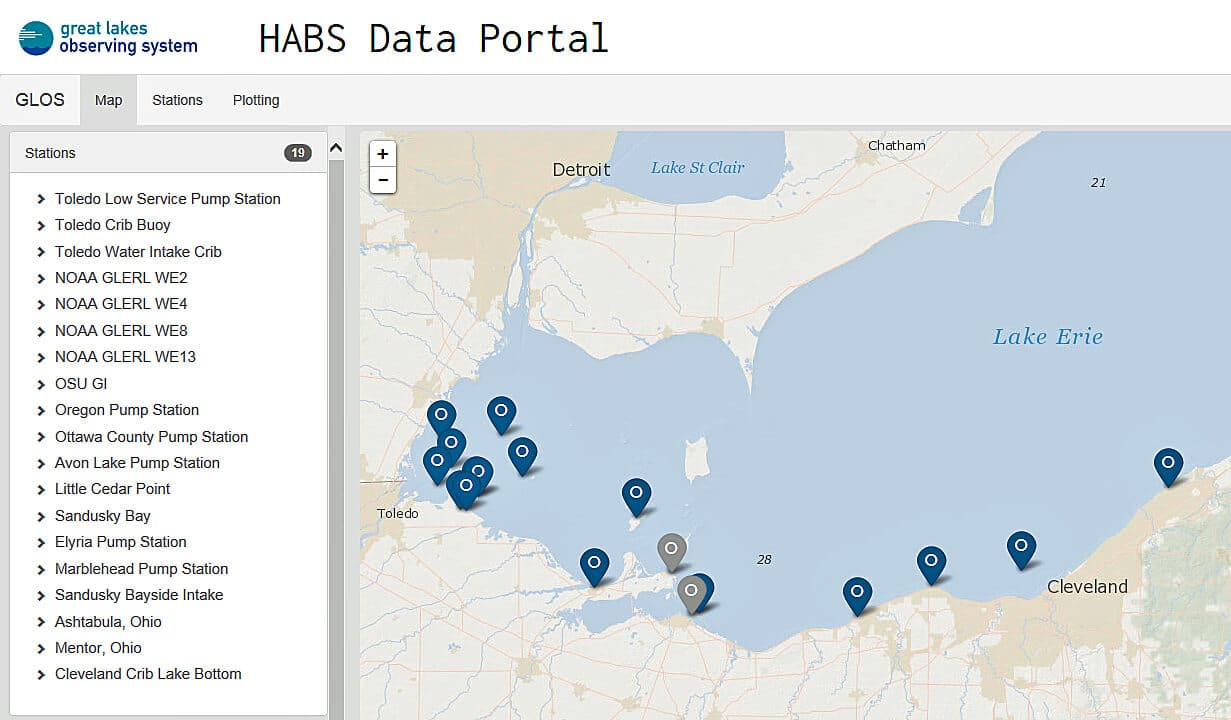Photo Credit: NASA Landsat 8, September 26, 2017
Answering the Challenges of HABs with Information & Research
Harmful algal blooms (HABs) have been a major issue plaguing the Great Lakes in recent years, and they have been especially prevalent in Western Lake Erie.
By Ed Verhamme, Project Engineer (Ann Arbor, Michigan)
October 4, 2017
HABs’ green, slimy, mid-to-late summer presence has brought about a sense of urgency. A new generation of scientists and water quality managers are working to determine the underlying cause of HAB formation, and are taking action to monitor and protect the public from potentially detrimental effects. Progress in reducing and responding to the effects of HABs in Lake Erie has been marked by steps taken since the Toledo Water Crisis of 2014 and include more monitoring and research, and new regulations. LimnoTech is contributing to several monitoring and research efforts to help advance our understanding of HABs as well as to improve HAB detection, prediction, and response. Even before the Toledo Water Crisis began, LimnoTech worked with the City of Toledo to conceptualize a state-of-the-science monitoring system that the City’s water treatment plant managers could use to monitor lake conditions and raw water quality in real-time. Within a week after the crisis, that concept was put to use as LimnoTech installed and maintained a monitoring system to meet the needs of plant managers.
LimnoTech’s Lake Erie monitoring system is made up of real-time water quality sensors at 12 public water systems from Toledo to Cleveland. The system provides a snapshot of lake conditions every 10 minutes, and helps protect drinking water supplies for nearly three million people.
Since 2015, LimnoTech has maintained real-time water quality sensors at 12 public water systems from Toledo to Cleveland. This network of online, year-round, water quality and HAB monitoring sensors is the largest of its kind in the Great Lakes. The network provides a snapshot of lake conditions every 10 minutes, and helps protect drinking water supplies for nearly three million people. LimnoTech manages the archiving, dissemination, and display of data from this one-of-a-kind management and research observing system through our data management and communications contract with the Great Lakes Observing System (GLOS). The tool LimnoTech developed with GLOS is called the “HABS Data Portal” and is available online at http://habs.glos.us. The portal provides managers and other stakeholders with instant access to critical information in an easy-to-view, map-based interface with powerful plotting capabilities.
LimnoTech is also assisting the State of Michigan’s Department of Environmental Quality (MDEQ) with another data monitoring effort to assess tributary nutrient loads to Lake Erie in the Maumee River watershed. Excess nutrient loads from the Maumee River have been identified by scientists as the leading cause of HABs in Western Lake Erie. Our 2017 monitoring project will allow MDEQ to calculate nutrient loads to various branches of the St. Joseph River and Bean Creek, both subwatersheds of the Maumee River. Automated grab samplers and high-accuracy water level gauges can help State regulators identify and target areas with higher-than-average nutrient loads and also help monitor progress made from investments in restoration projects and agricultural best management practices.
As environmental experts, LimnoTech has coupled science and engineering technology to develop a systematic approach for finding solutions for our clients to control or prevent the impacts that algal blooms can have on recreation, drinking water, cooling water, ecosystems, and the economy.
LimnoTech is also heavily involved in HABs research efforts as members of university and agency research teams. Our research work is aimed at advancing the understanding of HAB causes and developing steps that managers can take to reduce HAB size, severity, and toxicity. As of September, the bloom of 2017 extends over an area of 700 sq. miles. The increasing severity of blooms and impacts in Western Lake Erie reinforces the need for additional monitoring and research. We will continue to support enhanced real-time monitoring, data management and communications systems to disseminate critical information. We are also committed to advancing and refining environmental models to enhance understanding of the factors that cause HAB formation as well as provide direct support to other scientists and managers studying HABs.
Ed is heavily involved on a variety of Great Lakes projects that focus on reaching out to stakeholders and identifying products and tools that water resource managers need to support decision-making. He has contributed to the development of a new web portal for the Great Lakes Observing System (GLOS) to display environmental data and model simulations through a map-based interface. He has also been a leader in expanding a public buoy network to deliver real-time weather and water observations to Great Lakes Communities.






